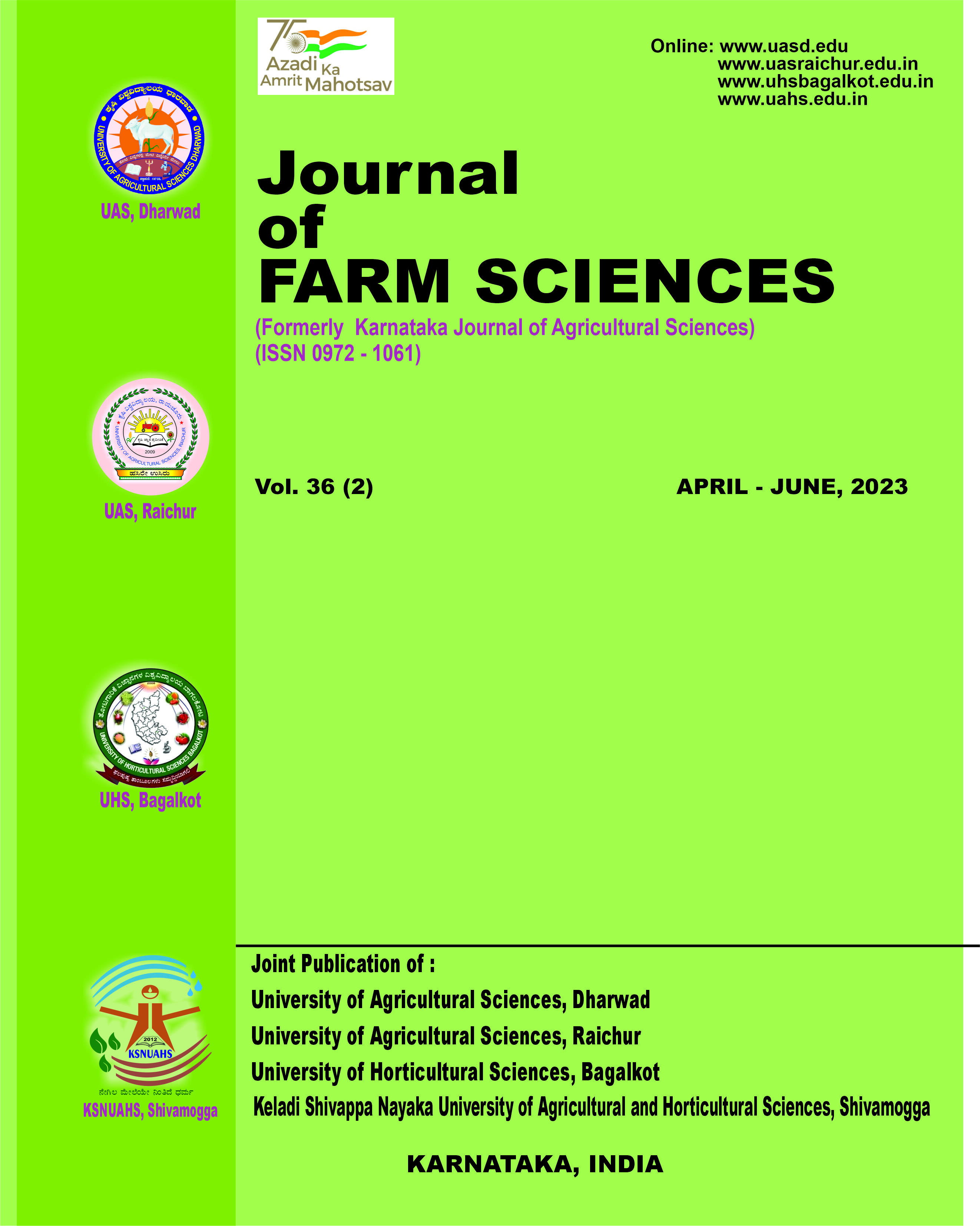Association between drought tolerance traits, yield components andyield under moisture stress condition in maize
Keywords:
Drought tolerance, Maize, Moisture stress, Yield
Abstract
Maize is one of the important cereal crops with diverse uses. The production potential of the crop is affected bydrought stress worldwide especially under changing climate scenario. The present investigation was carried out undersimulated moisture stress condition to study association of drought tolerance traits, yield components with grain yield inmaize hybrids. Significant genetic variability was observed among maize hybrids for phenological, physiological and yieldattributing traits. Significant positive correlation was observed between drought tolerance traits (RWC at 75 DAS, SLW at60 DAS), phenological (plant height, ear height, total number of leaves), yield components (cob length, cob girth, numberof kernel rows per cob, number of kernels per row, cobs per plant and harvest index) and seed yield. Seed yield hadsignificant negative correlation with proline content at 75 DAS both at phenotypic and genotypic level. Drought tolerancetraits viz., RWC (60 and 75 DAS), SLW (60 DAS), proline (60 DAS), pollen fertility, days to 50% silking and yieldcomponents viz., number of kernels per row, cobs per plant, shelling percentage and harvest index exhibited high positivedirect effect. Thus, these traits can be used as selection criteria since these traits were found to be the important directcontributors for grain yield under moisture stress condition
Published
2021-03-20
How to Cite
KAVYA, A., NAIDU, G., BHAT, J., & MUMMIGATTI, U. (2021). Association between drought tolerance traits, yield components andyield under moisture stress condition in maize. Journal of Farm Sciences, 36(01), 1-7. https://doi.org/10.61475/jfm.v36i01.330
Section
Research Article
Copyright (c) 2023 Journal of Farm Sciences

This work is licensed under a Creative Commons Attribution-NonCommercial-NoDerivatives 4.0 International License.


